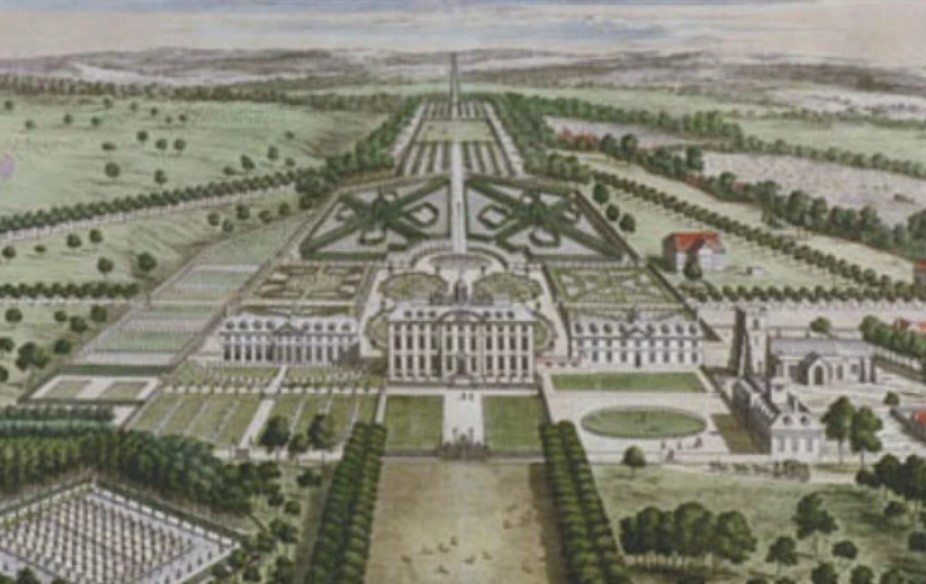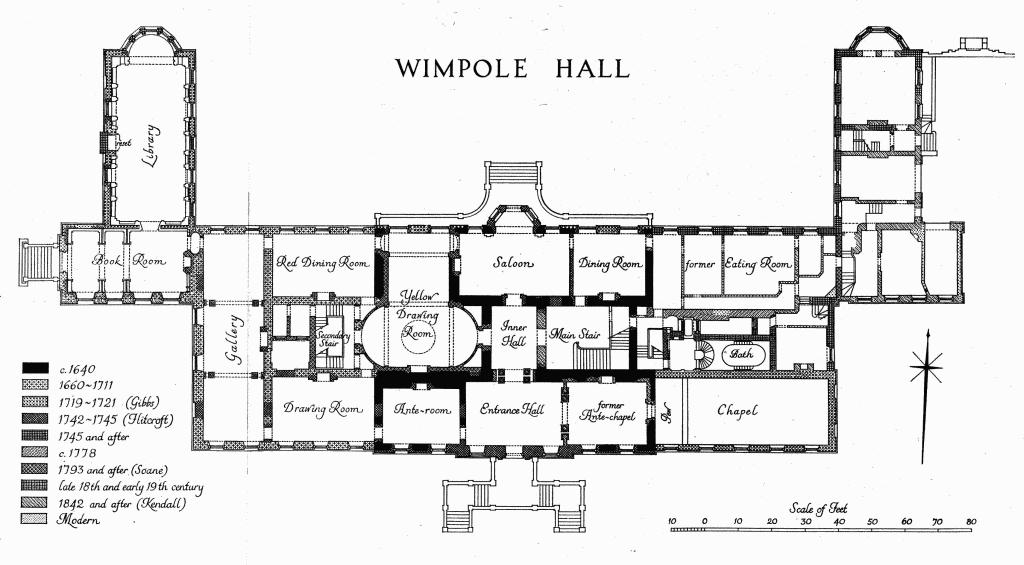
Built in the 17th century, Wimpole Estate in Cambridgeshire had extensive gardens developed by some of the most famous Georgian and Regency era landscape designers, including Capability Brown and Humphry Repton (Wimpole Hall – Cambridge – Parks & Gardens (parksandgardens.org)).
The house was originally constructed in 1640. The property changed hands a number of times through the 17th and 18th centuries. By the late 1700s, Wimpole was owned by the third Earl of Hardwicke, whose interest in architecture and agricultural improvements breathed new life into the estate (Wimpole through the ages | National Trust).

The large house is a neo-classical mansion constructed with red brick, limestone dressings, and a balustraded slate roof.
One of the most interesting features is a plunge bath installed in 1792 by the Earl and a cupola in the yellow drawing room also installed by the Earl in 1793. Many of the ceilings are intricate with details, friezes and paintings and classical elements like columns, and intricate tile floors can still be seen.
Featured in a guide book of Cambridgeshire from 1808, we have a glimpse at the delights on offer for visitors:









